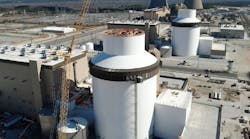Despite the growing prominence of renewable power and strong renewable mandates from state governments, stranded assets are unlikely to become a major credit risk for U.S.-regulated utilities, according to a new report from Moody's Investors Service. While exposure to stranded assets could increase during the industry's transition to renewables from natural gas and coal, Moody's expects regulators will allow utilities to recover costs from customers.
"Stranded cost recovery has numerous precedents in the sector, including the deregulation efforts of the late 1990s that resulted in more than US$100 billion of stranded assets," sais Toby Shea, a vice president at Moody's and the lead author of the report. "In almost all cases, the utilities were able to recover stranded costs without hurting their credit quality."
According to the report, large-scale closures of coal-fired plants have thus far not created a large amount of stranded assets because most of the plants were older and toward the end of their useful lives. Newer, more efficient coal plants still have significant book value, but utilities plan to keep most of them running until around 2030 to 2040 due to their value in mitigating the intermittency of wind and solar power.
Stranded cost exposure could rise if states pursue efforts that materially accelerate the transition to renewable energy. A sudden, disruptive acceleration aimed at decarbonizing generation could create challenges for newer, more efficient fossil-fuel plants.
Overall, long lead times will allow the regulated utility industry to make a relatively smooth transition to renewable generation. Even in Hawaii and California, the states with the most aggressive decarbonization policies, the mandated deadline for 100% renewable energy is still 27 years away. In the meantime, the cost of renewable generation and battery storage will continue to decline. This will also allow coal- and gas-fired plants to depreciate further, lowering utility exposure to stranded assets.


